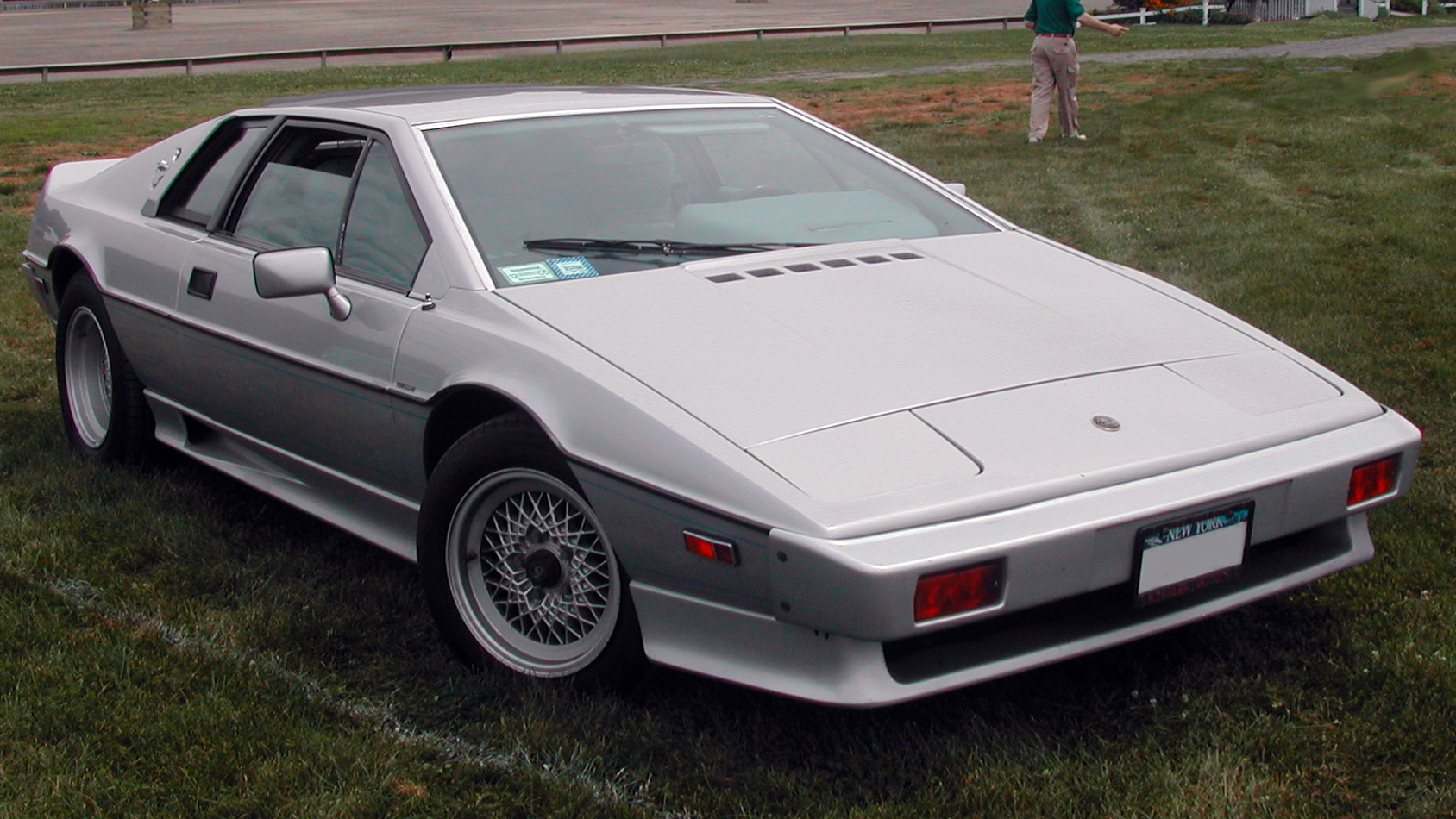-
Insurance
InsuranceAbout our productsLearn about insuringGet a quote Get current values, historical values, model history and more.
-
Valuation
ValuationHagerty valuation toolLook up a vehicle value Get current values, historical values, model history and more.
-
Events
EventsHagerty official eventsHagerty ClubhouseEvent calendar
-
Entertainment
EntertainmentMore to explore
- Portal login
1991 Lotus Esprit
HC Coupe 2.2 L
Vehicle values by condition
Fair
Condition 4
£12,100
#4 cars are daily drivers, with flaws visible to the naked eye. The chrome might have pitting or scratches, the windshield might be chipped.
Good
Condition 3
£17,400
#3 cars could possess some, but not all of the issues of a #4 car, but they will be balanced by other factors such as a fresh paint job or a new, correct interior.
Excellent
Condition 2
£25,300
#2 cars could win a local or regional show. They can be former #1 cars that have been driven or have aged. Seasoned observers will have to look closely for flaws.
Concours
Condition 1
£35,900
#1 vehicles are the best in the world. The visual image is of the best car, unmodified, in the right colours, driving onto the lawn at the finest concours.
Insurance premium for a
1991 Lotus Esprit HC Coupe 2174
valued at £17,400
£330.46
/ year*
History of the 1987 - 1992 Lotus Esprit

1987 - 1992 Lotus Esprit
Lotus Esprit HC (Coupe), 1986-1988
The Lotus Esprit Turbo HC was in production from 1986 until 1988. Styled by Giorgetto Giugiaro, it is a mid-engine, rear wheel drive sportscar seating two adults.
The Turbo HC was the final evolution of the Series 3 Lotus Esprit Turbo – a model which had been introduced with a wet sump engine in 1982 to replace the previous dry sump S2 Turbo model. As denoted by the name, the HC had higher compression ratios of 8.0:1 against 7.5:1, boosting power to 215bhp and torque to 220lb.ft. That torque was available at lower engine speeds too, increasing the tractability and driveability of this Lotus flagship. Almost £10000 cheaper than either of its primary rivals in period – the Porsche 944 Turbo and the Ferrari 328 - the Esprit Turbo HC was faster than both in every parameter except maximum speed, making it a quicker car in the real world environment. Still carburetted, via a pair of 45mm Dellortos, there were also changes to the inlet ports and exhaust manifold to help dissipate heat.
The Turbo HC was discontinued in 1988, as Lotus prepared for the launch of the Peter Stevens-styled, more aerodynamic, softer X180 Esprit models. The X180 Esprit Turbo retained the same drivetrain as its predecessor. 429 Esprit Turbo HCs were built during the two year production run.
Comfort is optional in an Esprit – in that it’s a luxurious and comfortable environment provided you’re not of excessive stature. Six feet is realistically the limit for the Esprit driver, and less is optimal. Moreover, the pedals are small and biased toward theleft, meaning that small feet are needed to drive with any degree of decorum. You can heel and toe, but you might get your shoes caught in the process. Weighty steering and a sense of width dominate at slow speeds, but open up the Esprit HC and it feels as if it and the effort required to drive it both diminish around you. There’s little discernible turbo lag, and plenty of additional shove. It’s a car which will flatter its driver with ease, and make you feel like you’re far more competent behind the wheel than you ever thought. It might feel more progressive and less muscly than cars like the Renault GTA, but that’s because in the elimination of lag the Lotus’s turbocharged engine almost feels like a big naturally aspirated unit. It’s less dramatic, but far more useful.
Check for cracking or uneven fading on the bodywork – glassfibre repairs are specialist jobs, and stripping an Esprit for paint can take 100 hours owing to the complexity of the design. Doors, for instance, require repeat adjustments to get right once on the car. Gearboxes can fail, crown wheels and pinions in particular – and while it’s a box that can be sourced courtesy of Maserati Merak or Citroen SM specialists it’s effectively only a stopgap as the crown wheels and pinions aren’t currently available. Esprits aren’t hard on suspension but fresh bushing is always a good sign.
With a single model to choose from, and a limited number, the primary concerns are condition and colour. Optional extras such as leather and air conditioning make a car more desirable, though they don’t necessarily add to its value. Bold statement colours such as red will find a home more swiftly than sober metallics – the Esprit is a flamboyant car and colours should reflect that. Buy the best condition example you can afford above all else though.
Porsche’s 944 Turbo and Ferrari’s 328 were its closest rivals in period. The Renault GTA Turbo would also be worth a look as an unusual turbocharged 1980s GT, while the later X180 Esprit offers the same driver package with a smidgen more space for the driver. We’d also possible consider a Porsche 911 as a viable alternative, it has the feeling of exclusivity missing from the 944 even if it’s a more dated design.
All 1991 Lotus Esprit body types
| Year | Make | Model | Submodel | Body Type | Engine size | Average value |
|---|---|---|---|---|---|---|
| 1987 | Lotus | Esprit | HC | Coupe | 2.2 L | £ 12,100 17,400 25,300 35,900 |
| 1987 | Lotus | Esprit | Turbo SE | Coupe | 2.2 L | £ 14,900 21,000 32,200 39,500 |
Hagerty Newsletter
Get your weekly dose of car news from Hagerty UK in your inbox

ADVERTISEMENT